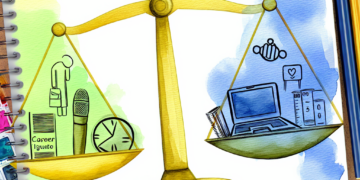Macroeconomics and Economic Cycles

Understanding Economic Dynamics
Macroeconomics plays a critical role in analyzing the overall economy, focusing on large-scale economic factors and their interactions. It investigates elements such as national income, unemployment rates, and inflation, aiming to understand how these indicators can influence economic cycles. These cycles, which represent fluctuations in economic activity, are pivotal to assessing the health of an economy and making informed financial decisions.
Economic cycles are characterized by distinct phases, including:
- Expansion – A period marked by increasing economic activity, where metrics such as gross domestic product (GDP) grow, and business investments rise. For example, during the expansion phase post the 2008 financial crisis, the U.S. economy saw steady growth, spurring job creation and rising consumer confidence.
- Peak – The turning point where the economy reaches its highest level of performance before confronting a slowdown. This phase is critical as it often reflects heightened consumer demand but can lead to inflationary pressures if growth continues unchecked.
- Contraction – A decline in economic activity, often leading to recessions. During this phase, businesses may reduce production due to dwindling demand, which can directly lead to job losses and increased unemployment rates. The U.S. experienced a contraction during the COVID-19 pandemic in 2020, which had profound implications on various sectors.
- Trough – The lowest point in the economic cycle, signifying the transition to recovery and expansion. Identifying this phase accurately allows policymakers and investors to position themselves for impending growth opportunities.
Understanding these cycles is essential for policymakers, investors, and businesses. By identifying patterns in these phases, stakeholders can make informed decisions that promote economic stability and growth. Effective government intervention, such as adjusting interest rates or modifying fiscal policies, is often necessary during contractions to stimulate recovery and mitigate the effects of recessions.
In the United States, fluctuations within the economic cycle can significantly impact various sectors, including housing, manufacturing, and services. For instance, a robust expansion phase may lead to increased demand for homes, subsequently driving up construction rates and employment in related industries. Conversely, during a contraction, the housing market may decline, leading to reduced construction activity and rising foreclosures.
Thus, assessing macroeconomic indicators is vital for anticipating these cycles and strategizing accordingly. Investors might track changes in interest rates, which can indicate future economic conditions, while policymakers may focus on unemployment trends to gauge labor market health. Engaging with these indicators allows stakeholders to navigate the complexities of the economic landscape and position themselves for success in varying market conditions.
CHECK OUT: Click here to explore more
The Phases of Economic Cycles
The study of macroeconomics intricately involves understanding the cyclical nature of economies. Economic cycles typically encompass four main phases—expansion, peak, contraction, and trough—each with distinctive characteristics that merit thorough examination. By evaluating these phases, stakeholders can glean insights into future economic conditions and formulate strategies accordingly.
Expansion represents a vital phase in the economic cycle, defined by rising activity across various sectors. During this period, businesses experience increased demand for goods and services, leading to higher production levels and greater employment opportunities. For instance, between 2010 and 2019, the U.S. witnessed a sustained period of expansion following the recovery from the Great Recession, characterized by low unemployment rates and a steady increase in GDP. This growth not only improved consumer confidence but also promoted investments in innovation and infrastructure, paving the way for long-term economic benefits.
The subsequent phase, known as the peak, signifies the zenith of economic performance. At this juncture, indicators such as GDP growth rates reach their highest levels, prompting concerns regarding potential overheating in the economy. This phase can yield inflationary pressures as demand outpaces supply, leading to increased prices for goods and services. Policymakers often need to monitor inflation indicators closely during this time, as unchecked inflation can undermine economic stability.
Once the economy surpasses its peak, it enters the contraction phase, frequently leading to recessionary trends. This downturn is characterized by a decline in various economic activities, including production, investment, and consumption. During a contraction, businesses may face diminishing consumer demand, prompting cutbacks in spending, layoffs, and a rise in unemployment rates. The U.S. economy experienced a marked contraction during the COVID-19 pandemic, emphasizing how external shocks can precipitate significant economic downturns and widespread market disruptions.
The trough phase represents the culmination of the contraction, where economic activity reaches its lowest point. Recognizing this phase is crucial as it signals the potential for recovery. Stakeholders who successfully identify the trough can position themselves advantageously to leverage impending growth opportunities. For example, when the economy emerges from the trough, policymakers may implement stimulus measures to facilitate a return to expansion, while investors may seek to capitalize on undervalued assets across recovering industries.
Each phase plays a critical role in shaping the economic landscape, influencing decisions made by businesses, consumers, and policymakers alike. Understanding the dynamics of these cycles is essential for formulating effective strategies and guiding the economy toward sustained growth. By closely monitoring macroeconomic indicators, stakeholders can enhance their preparedness for shifts in economic conditions, ultimately contributing to long-term economic resilience.
SEE ALSO: Click here to read another article
Understanding Macroeconomic Indicators
To navigate the complexities of economic cycles, it is paramount to recognize the macroeconomic indicators that serve as beacons for assessing economic health. Important metrics such as Gross Domestic Product (GDP), unemployment rates, inflation rates, and consumer confidence play pivotal roles in understanding the movement through the various phases of economic cycles.
Gross Domestic Product (GDP) stands as the most comprehensive measure of economic activity. As a key indicator, GDP reflects the total value of all goods and services produced over a specific time frame. An increase in GDP typically signifies a robust economy, driving investments and consumer spending. Conversely, a declining GDP can indicate impending downturns. For instance, during the second quarter of 2020, the U.S. GDP contracted by an annualized rate of 32.9%, a record decline that highlighted the profound effects of the COVID-19 pandemic on economic activity.
Unemployment rates are another vital indicator, revealing insights into labor market conditions. Elevated unemployment rates during contraction phases often result from businesses scaling back due to decreased demand. The U.S. witnessed significant spikes in unemployment, peaking at 14.8% in April 2020, a stark illustration of how quickly economic cycles can shift and the corresponding social impact. Efforts to lower unemployment, including stimulus packages and job creation programs, become critical during contracting periods, as they can catalyze growth leading back into expansion.
Inflation rates are critical for assessing the purchasing power of consumers. As economies expand, there is a tendency for rising prices as demand surpasses supply. Monitoring the Consumer Price Index (CPI) can offer insights into prevailing inflation trends. The U.S. recorded a significant inflation rate of 7.0% annually in December 2021, showcasing the effects of pent-up demand and supply chain disruptions. Maintaining prices within a stable range is essential for fostering consumer confidence and preventing the economy from entering a spiraling cycle of rising costs.
The Role of Fiscal and Monetary Policy
Macroeconomic management often involves strategic interventions through fiscal and monetary policy, which aim to mitigate the adverse effects of economic cycles. Fiscal policy entails government spending and taxation decisions that influence economic activity. For instance, during downtrends, governments may implement stimulus packages to bolster demand. The $1.9 trillion American Rescue Plan, passed in March 2021, is an exemplary instance where government intervention sought to counteract the effects of the pandemic-induced contraction.
Monetary policy, managed by the Federal Reserve, includes adjustments to interest rates and money supply to control inflation and stabilize economic growth. By lowering interest rates, the Fed can encourage borrowing and spending, facilitating movement towards expansion. In response to economic uncertainty during the pandemic, the Federal Reserve slashed interest rates to near-zero levels, promoting liquidity in the market and encouraging investments.
- Understanding how fiscal and monetary policies interact with economic cycles empowers stakeholders to make informed decisions.
- Anticipating shifts in these policies can provide a competitive edge for businesses and investors aiming to position themselves for forthcoming growth opportunities.
In summary, a thorough grasp of macroeconomic indicators and the nuanced roles of fiscal and monetary policies allows stakeholders to responsibly engage with economic realities. These elements are essential for navigating the inevitable fluctuations in economic cycles, therefore facilitating a resilient approach to long-term planning and development.
CHECK OUT: Click here to explore more
Conclusion
In conclusion, the intricate relationship between macroeconomics and economic cycles underscores the importance of key indicators and effective policy interventions in shaping national economic outcomes. Understanding metrics such as GDP, unemployment, and inflation rates equips policymakers, businesses, and investors with the insights necessary to navigate the complexities of an ever-changing economic landscape. For example, when the GDP contraction persists, it often serves as a precursor for potential recession, prompting stakeholders to devise strategic responses to cushion the economy’s impact.
Moreover, it is crucial to recognize the proactive roles of fiscal and monetary policies. These tools not only facilitate short-term stabilization during economic contractions but also promote sustainable growth and productivity in expansion phases. The implementation of fiscal policies, such as government spending on infrastructure or stimulus checks, has historically demonstrated its effectiveness, as seen during the financial crisis of 2008 and the subsequent recovery phase. Similarly, the Federal Reserve’s actions, such as altering interest rates to manage inflation or stimulate borrowing, are pivotal in guiding economic momentum.
As witnessed during the COVID-19 pandemic, swift and decisive measures—including the Coronavirus Aid, Relief, and Economic Security (CARES) Act—can significantly mitigate adverse effects and lay the groundwork for recovery by providing individuals and businesses with the necessary financial support to weather the storm.
The future of economic resilience lies in the capacity to anticipate and respond to fluctuations in these cycles. Stakeholders should remain vigilant in monitoring macroeconomic indicators and recognize the implications of policy shifts. By fostering an environment of informed decision-making and adaptability, they can better position themselves to harness opportunities during periods of growth while safeguarding against potential downturns. For instance, businesses that invest in robust market analysis during growth phases can better shield themselves against sudden economic contractions.
Ultimately, a comprehensive understanding of macroeconomic principles empowers individuals and organizations alike to contribute to a robust and resilient economic framework in the United States. Making data-driven decisions, cultivating economic literacy, and engaging with ongoing economic discussions can significantly enhance both institutional strategies and individual financial health in a rapidly evolving marketplace.

James Carter is a financial writer and consultant with expertise in economics, personal finance, and investment strategies. With years of experience helping individuals and businesses navigate complex financial decisions, James provides practical insights and analysis. His goal is to empower readers with the knowledge they need to achieve financial success.





